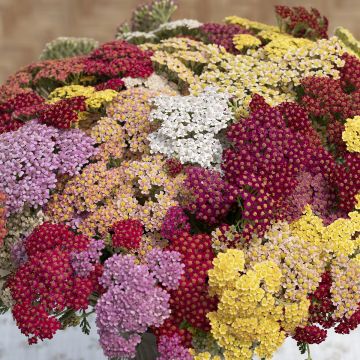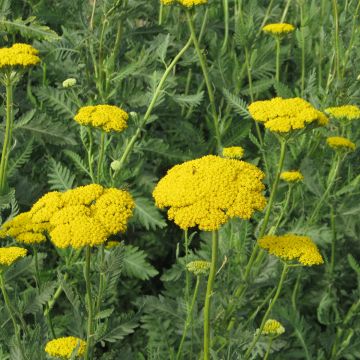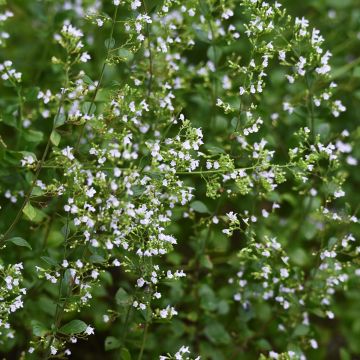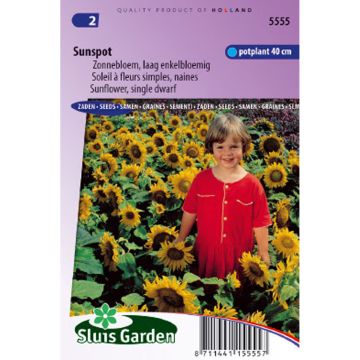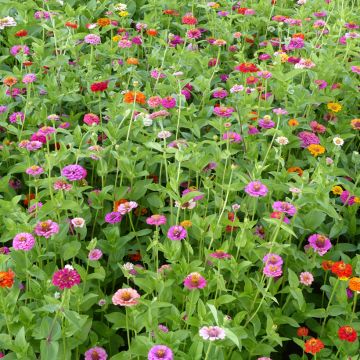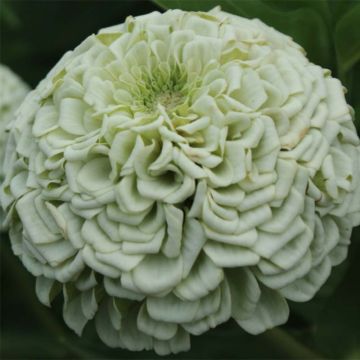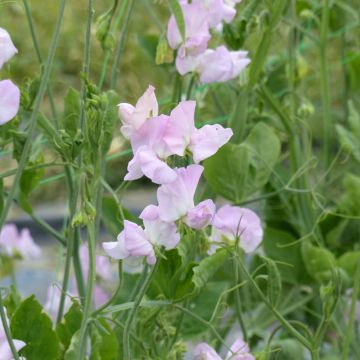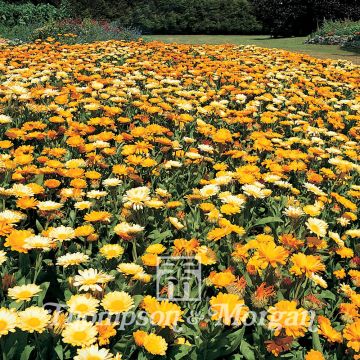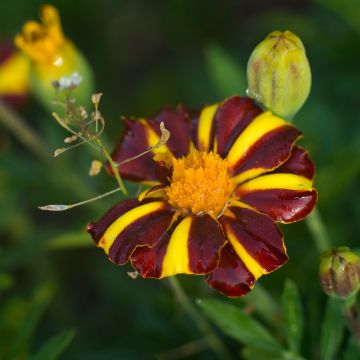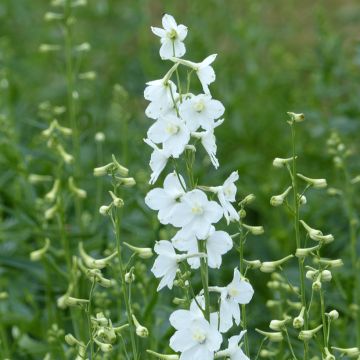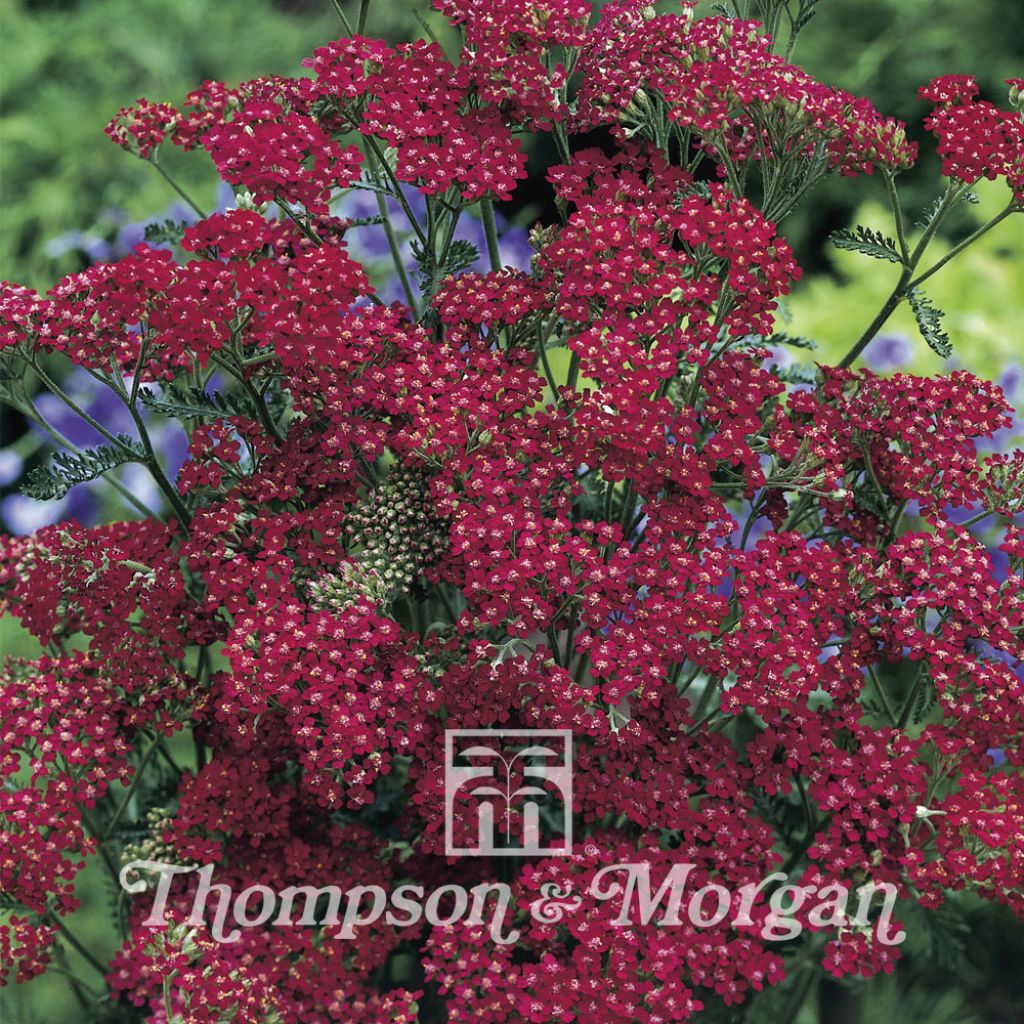

Graines d'Achillea Millefolium Cassis - Achillée millefeuille rouge cerise
Achillea millefolium Cassis - Yarrow
Achillea millefolium Cassis
Common Yarrow, Milfoil, Thousand-leaf, Nosebleed plant
Too few seeds English brand more than disappointing
anne fournier, 10/04/2016
Why not try an alternative variety in stock?
View all →This plant carries a 6 months recovery warranty
More information
We guarantee the quality of our plants for a full growing cycle, and will replace at our expense any plant that fails to recover under normal climatic and planting conditions.
Seed-only orders are dispatched by sealed envelope. The delivery charge for seed-only orders is €3.90.
Does this plant fit my garden?
Set up your Plantfit profile →
Description
Achillea millefolium Cassis, also known as Yarrow, is a perennial plant appreciated for its dense and vigorous growth, heat and drought resistance, and vibrant cherry red flowers. It has a long and abundant flowering period, from summer to autumn. This plant is low-maintenance, highly ornamental, perfect for quickly covering slopes, dressing borders, or creating beautiful wild bouquets. Exuberant and undemanding, this garden favorite adds a nostalgic charm to unpretentious flower beds. Resistant and easy to cultivate in all regions.
Achillea millefolium Cassis is a perennial plant with stoloniferous growth habit, forming compact and upright tufts from spring onwards. It belongs to the Asteraceae family. It is one of the many cultivars of Achillea millefolium native to Europe and Asia Minor. The plant reaches a height of 65 cm (26in) when in bloom, with foliage measuring 20 to 30 cm (8 to 12in). It spreads over 50 cm (20in) or more. The inflorescence is a flattened corymb, 8 cm (3in) in diameter. The remarkably long flowering period extends from July to October. The flowers are actually heads, with tubular disc florets in the central part, while the peripheral florets are ligulate. These heads, appearing at the tops of stems, form flat or slightly rounded corymbs, intensely coloured in cherry red. They give rise to fruits called achenes. The stem is channelled and villous. The foliage is deciduous or semi-evergreen, aromatic and finely dissected into narrow strips. The leaves are bipinnately lobed, feathery, and dark green in color, with a matte finish. The plant spreads across the ground surface through stolons, allowing it to colonise large areas.
Achillea millefolium Cassis integrates well in rock gardens, on top of walls, as a border plant, or on slopes where it helps prevent erosion. This stoloniferous plant can be used as ground cover on large surfaces, eliminating the need for lawn mowing in low-traffic areas. It tolerates competition from tree roots, making it a good groundcover choice for woodland edges. As it is easy to cultivate and withstands drought well, it is perfect for dressing the base of shrub roses or bordering a sunny flower bed.
Report an error about the product description
Flowering
Foliage
Plant habit
Botanical data
Achillea
millefolium
Cassis
Asteraceae
Common Yarrow, Milfoil, Thousand-leaf, Nosebleed plant
Cultivar or hybrid
Other Achillea seeds
Planting and care
Sow Achillea millefolium seeds from February to June or from September to October on the surface of good potting soil and cover the seeds with a thin layer of vermiculite compost. Place in a mini-greenhouse at a temperature of 15-24°C (59-75.2°F) or enclose the seed tray inside a polyethylene bag until germination, which usually takes 1 to 3 weeks. Keep in the light as it facilitates germination.
When the seedlings are large enough to handle, transplant them into 8 cm (3in) pots and grow them in cooler conditions. When the plants are well-developed and all risk of frost has passed, gradually acclimatise the plants to outdoor conditions for 10 to 15 days before planting them outside. Transplant the plants at a distance of 60cm (24in) in well-drained soil in full sun. September sowings will overwinter in a cold frame and be planted outside the following spring.
Plant Achillea millefolium in any soil, even chalky, dry or moist but well-drained. It can even adapt to clay soils if they are healthy and well amended. It will grow in partial shade but prefers full sun. In cooler climates, planting can be done all year round. In regions with hot and dry summers, it is preferable to plant in September-October so that the plant can establish its roots during autumn and winter to withstand the following summer. It is advisable to cut back all vegetation at the end of the season to encourage the growth of new shoots in spring.
Sowing period
Intended location
-
, onOrder confirmed
Reply from on Promesse de fleurs
Flower seeds
Haven't found what you were looking for?
Hardiness is the lowest winter temperature a plant can endure without suffering serious damage or even dying. However, hardiness is affected by location (a sheltered area, such as a patio), protection (winter cover) and soil type (hardiness is improved by well-drained soil).

Photo Sharing Terms & Conditions
In order to encourage gardeners to interact and share their experiences, Promesse de fleurs offers various media enabling content to be uploaded onto its Site - in particular via the ‘Photo sharing’ module.
The User agrees to refrain from:
- Posting any content that is illegal, prejudicial, insulting, racist, inciteful to hatred, revisionist, contrary to public decency, that infringes on privacy or on the privacy rights of third parties, in particular the publicity rights of persons and goods, intellectual property rights, or the right to privacy.
- Submitting content on behalf of a third party;
- Impersonate the identity of a third party and/or publish any personal information about a third party;
In general, the User undertakes to refrain from any unethical behaviour.
All Content (in particular text, comments, files, images, photos, videos, creative works, etc.), which may be subject to property or intellectual property rights, image or other private rights, shall remain the property of the User, subject to the limited rights granted by the terms of the licence granted by Promesse de fleurs as stated below. Users are at liberty to publish or not to publish such Content on the Site, notably via the ‘Photo Sharing’ facility, and accept that this Content shall be made public and freely accessible, notably on the Internet.
Users further acknowledge, undertake to have ,and guarantee that they hold all necessary rights and permissions to publish such material on the Site, in particular with regard to the legislation in force pertaining to any privacy, property, intellectual property, image, or contractual rights, or rights of any other nature. By publishing such Content on the Site, Users acknowledge accepting full liability as publishers of the Content within the meaning of the law, and grant Promesse de fleurs, free of charge, an inclusive, worldwide licence for the said Content for the entire duration of its publication, including all reproduction, representation, up/downloading, displaying, performing, transmission, and storage rights.
Users also grant permission for their name to be linked to the Content and accept that this link may not always be made available.
By engaging in posting material, Users consent to their Content becoming automatically accessible on the Internet, in particular on other sites and/or blogs and/or web pages of the Promesse de fleurs site, including in particular social pages and the Promesse de fleurs catalogue.
Users may secure the removal of entrusted content free of charge by issuing a simple request via our contact form.
The flowering period indicated on our website applies to countries and regions located in USDA zone 8 (France, the United Kingdom, Ireland, the Netherlands, etc.)
It will vary according to where you live:
- In zones 9 to 10 (Italy, Spain, Greece, etc.), flowering will occur about 2 to 4 weeks earlier.
- In zones 6 to 7 (Germany, Poland, Slovenia, and lower mountainous regions), flowering will be delayed by 2 to 3 weeks.
- In zone 5 (Central Europe, Scandinavia), blooming will be delayed by 3 to 5 weeks.
In temperate climates, pruning of spring-flowering shrubs (forsythia, spireas, etc.) should be done just after flowering.
Pruning of summer-flowering shrubs (Indian Lilac, Perovskia, etc.) can be done in winter or spring.
In cold regions as well as with frost-sensitive plants, avoid pruning too early when severe frosts may still occur.
The planting period indicated on our website applies to countries and regions located in USDA zone 8 (France, United Kingdom, Ireland, Netherlands).
It will vary according to where you live:
- In Mediterranean zones (Marseille, Madrid, Milan, etc.), autumn and winter are the best planting periods.
- In continental zones (Strasbourg, Munich, Vienna, etc.), delay planting by 2 to 3 weeks in spring and bring it forward by 2 to 4 weeks in autumn.
- In mountainous regions (the Alps, Pyrenees, Carpathians, etc.), it is best to plant in late spring (May-June) or late summer (August-September).
The harvesting period indicated on our website applies to countries and regions in USDA zone 8 (France, England, Ireland, the Netherlands).
In colder areas (Scandinavia, Poland, Austria...) fruit and vegetable harvests are likely to be delayed by 3-4 weeks.
In warmer areas (Italy, Spain, Greece, etc.), harvesting will probably take place earlier, depending on weather conditions.
The sowing periods indicated on our website apply to countries and regions within USDA Zone 8 (France, UK, Ireland, Netherlands).
In colder areas (Scandinavia, Poland, Austria...), delay any outdoor sowing by 3-4 weeks, or sow under glass.
In warmer climes (Italy, Spain, Greece, etc.), bring outdoor sowing forward by a few weeks.

































